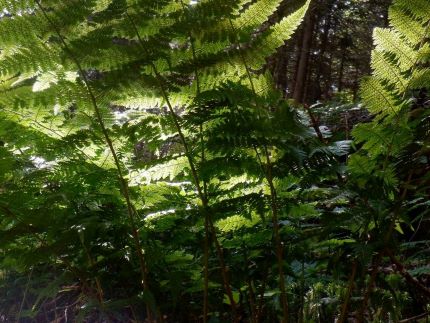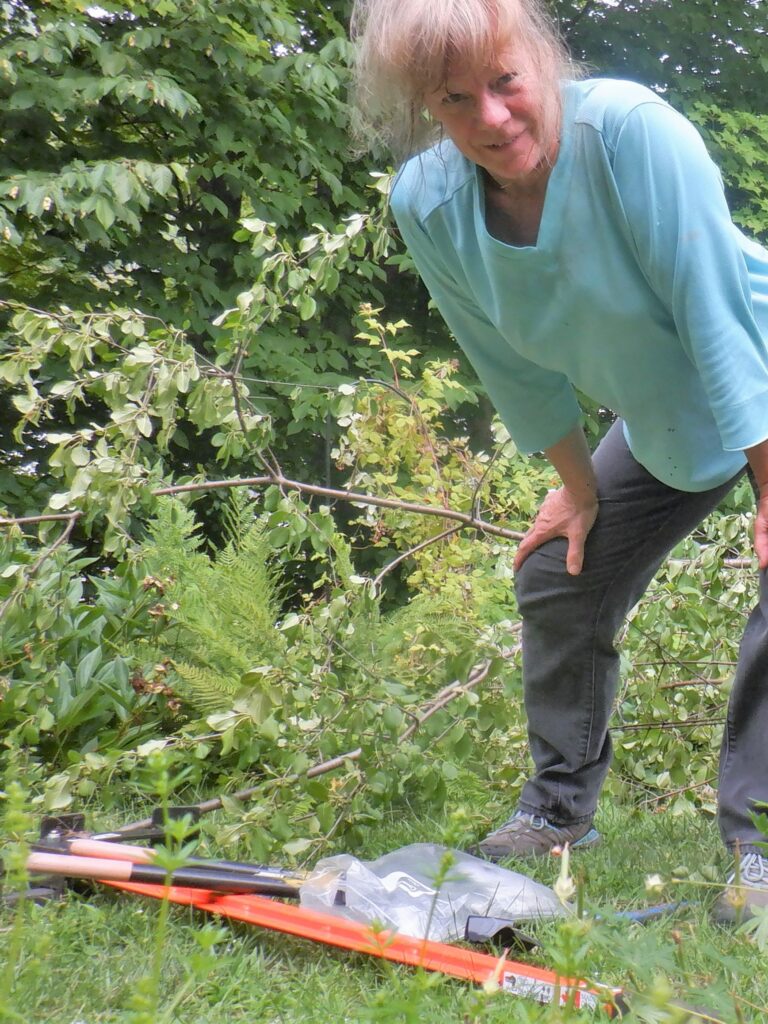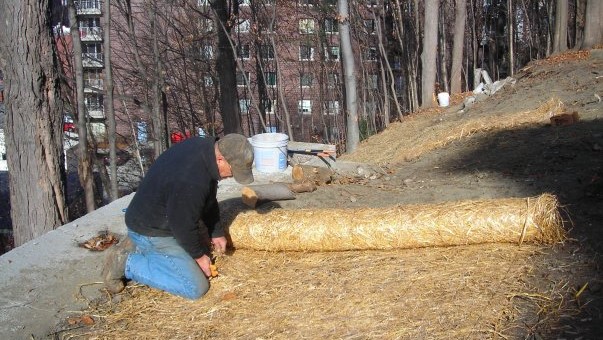
I’m removing an invasive plant on the borders of our small property. The work taxes my body, breaks open my heart, connects my spirit to something larger, and allows a wandering mind. The wandering leads me to reflect, as a personal coach, on the invasives of our internal terrain—the backstory in our understory.
Back to the Beginning
Just over ten years ago we had to tear down a portion of an old retaining wall and entirely rebuild our back yard. Starting only with dirt, we built a space that became sweet, welcoming, and endlessly nurturing to me. Symbiotic.
Money drove the decision to make the wall with waste blocks. They aren’t beautiful. But with time, new shrubs began peeking over and hiding the top row. One plant was thick and not unattractive. It put forth berries in late summer. It grew and spread quickly. Most importantly, it hid portions of the wall I didn’t want to see.
But this quick-growing stem began showing up everywhere. An easy tour of this gallery of Vermont invasives allowed me to quickly identify the plant as Buckthorn.
Herbicides are not a good choice. So I have cut, wrapped, pulled, sawed, and burned. For hours. This is what I’ve realized.
It’s Happening Inside of Me Too
We have invasives on our internal landscapes. They are habits, limiting beliefs, and fears. Like my shrub, these things serve us well. Until they don’t. An invasive will crowd out other growth. It will get in the way of what we really want.
Just as I did with the Buckthorn, we tend to deny, delay, and mentally push aside the realities of these discomforts before we are ready to clear them. We do that by employing some mental gymnastics—each invasive in their own right. Here are a few:

It’s not that bad.
We all have mental weeds, if you will. Look-alikes for our invasive. They show up as annoyances that don’t get in our way. Maybe we carry a persistent worry or fear that doesn’t stop us from acting.
True invasives have a trajectory. We spot a pattern in our setbacks. We develop a debilitating habit that begins to turn up everywhere, with poor results.
How bad does it have to get? Each of us draws our own line. We know when it’s crossed.
But this is what I have.
Yes, the known is more comfortable. But what stands ready to reclaim the space it has been denied? Behind the Buckthorn, the neighbor’s lilacs and berry bushes are ready to fill in. Behind our fears and limiting beliefs lie unique talents or those quirky/wonderful expressions of self that we’ve held back.
In some instances, there is nothing else. We face a stark void. This space offers an expansive question: What else is available to me?
This seems like a lot of work.
It probably is. How can that be managed?
Some elements of the solution applied in my yard: Asking for and accepting help, making a plan that’s do-able, getting the right tools for the job, and setting aside unhelpful suggestions.
And those days when we just can’t? We’re still doing the best we can.
The problems are too big to solve.
Situations are connected. But we can only start where we are. It may be useful to consider what we can do with what is right in front of us.
Here are some other useful (and empowering) ideas: In what ways am I well equipped to handle this? What can I offer in terms of solutions? What am I learning? How do I want to look back on this situation one month from now? In one year? Five?
It’s just going to sprout up again.
Some of it will.
What a relief it will be to recognize it sooner and to know what to do!

Writing a New Story
In the end, we are capable of making choice. Adventure is found in what we might create—whether starting from scratch or sorting through all the intertwined elements. Personal coaching offers clarity, focus, and accountability.
Is it time to begin?
Susan McDowell is a personal coach who lives, works, and maintains a beautiful garden in Central Vermont.
Read more of her blog here.